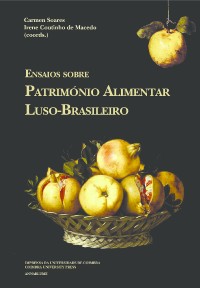Please use this identifier to cite or link to this item:
https://hdl.handle.net/10316.2/34032| Title: | Alimentar a cidade de Coimbra na Baixa Idade Média: notas sobre os alimentos, as estruturas de transformação alimentar e os ofícios | Other Titles: | Feeding the city of Coimbra in the Late Middle Ages: notes on food production and processing structures and professional occupations | Authors: | Campos, Maria Amélia Álvaro de | Keywords: | Coimbra in the Middle Ages;Olive oil mills;Bread ovens;Wine making;Meat supply;Fish supply;Professional occupations;Coimbra na Idade Média;Lagares de azeite;Fornos de pão;Produção de vinho;Abastecimento de carne;Abastecimento de peixe;Ofícios | Issue Date: | 2014 | Publisher: | Imprensa da Universidade de Coimbra Annablume Editora |
Journal: | http://hdl.handle.net/10316.2/34012 | Abstract: | During the Middle Ages, we can identify, inside the city of Coimbra, the existence of farming areas and food production and processing equipments. During this period, within the urban fabric of the city, we recognize the presence
of vegetable gardens, cattle sheds, henneries, amongst others, which reveal the existence of horticultural as well as livestock production, whose purpose was to feed the family unit and complement – or completely provide for – the domestic supply.
In the present paper, we based our analysis on the charters and codes of Coimbra, fundamental tools that regulate the rights and tributes of the city; next, we studied, the emphyteutic leases that were produced to manage the estate of several city churches. From the analysis of this body of documents, we identified the food items that supplied the city and the main agents behind the food production and supply. Amongst other examples, we highlight the vegetable gardeners and wine producers; fishmongers and butchers; bakers and pressers.
With the identification and the study of the professional occupations and activities upon which the city supply depended on, it is our intention to understand and disclose its functioning and its mechanisms; and their implementation within the urban fabric. Finally, it is also our intention to contribute to the available knowledge pertaining to the diet of the medieval man and, in particular, the inhabitant of Coimbra during the 13th, the 14th and the 15th centuries. Durante a Idade Média, dentro da cidade de Coimbra reconhecemos a existência de espaços de cultivo e de equipamentos relacionados com a produção e a transformação alimentar. Na malha urbana coimbrã deste período, a implantação de hortas, currais, galinheiros, entre outros elementos, denunciava a produção hortícola, bem como a criação de animais, com o intuito de alimentar a unidade familiar e complementar – ou prover totalmente – o abastecimento doméstico. Neste trabalho, partimos da análise dos forais e das posturas de Coimbra, instrumentos fundamentais para a regulamentação dos direitos e dos tributos da cidade, e analisámos, de seguida, os contratos de enfiteuse produzidos no âmbito da gestão do património de algumas igrejas da cidade. Da análise deste conjunto documental, identificamos os alimentos de que a cidade se abastecia e os principais agentes de produção e de distribuição alimentar. Entre outros exemplos, dar‑se‑á protagonismo aos almuinheiros e aos vinhateiros; aos peixeiros e aos carniceiros; aos forneiros e aos lagareiros. Com o reconhecimento e o estudo das profissões e das actividades de que dependia o abastecimento da cidade, granjearemos compreender e expor o seu funcionamento e mecanismos; e a sua implantação na malha urbana da cidade. Por fim, pretendemos, igualmente, contribuir para a consolidação do conhecimento da dieta alimentar do homem medieval, mais precisamente, do habitante de Coimbra dos séculos XIII, XIV e XV. |
URI: | https://hdl.handle.net/10316.2/34032 | ISBN: | 978-989-26-0886-0 (PDF) | DOI: | 10.14195/978-989-26-0886-0_5 | Rights: | open access |
| Appears in Collections: | Ensaios sobre património alimentar Luso-brasileiro |
Files in This Item:
| File | Description | Size | Format | |
|---|---|---|---|---|
| ensaiospatrim_nioalimentar_artigo6.pdf | 8.64 MB | Adobe PDF |  |
Items in DSpace are protected by copyright, with all rights reserved, unless otherwise indicated.
